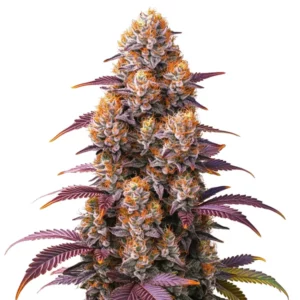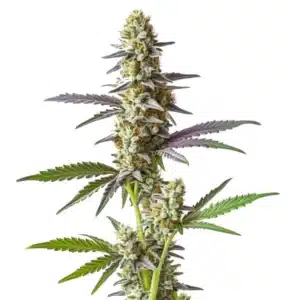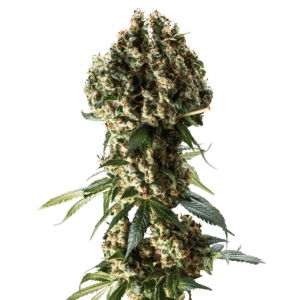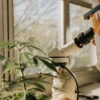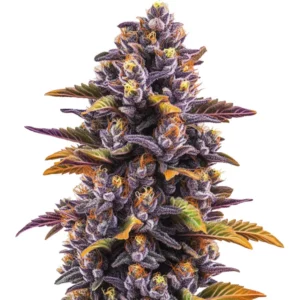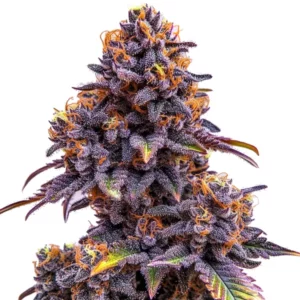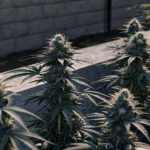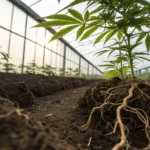
Outdoor Cannabis Pests: Identification and Control Guide
Our journey into outdoor cannabis pest identification begins with observing subtle plant signals that indicate when your garden needs attention. Gardeners who care about quality feeding and proper pest management understand that vigilant observation and timely intervention make all the difference in protecting your precious crop. The connection between proper feeding schedules and effective pest management is often overlooked, yet mastering both techniques leads to healthier, more resilient plants. In this guide, outdoor cannabis pest identification takes center stage as we detail the warning signs and provide innovative strategies for outdoor cannabis pest control.
Maintaining a balance between nutrient supply and pest pressure is essential for every cultivator. Recognizing the interplay between plant health and pest intrusion allows growers to fine-tune their methods. When pests interfere with nutrient uptake, the plants respond by showing stress signs that demand immediate attention. This guide offers a blend of feeding insights and pest management techniques, helping cultivators implement a robust strategy for thriving outdoor cannabis gardens.
Recommended Strains
God Bud Regular
|
|
THC | 28% - 30% (High) |
|
|
Type | Regular |
|
|
Yield | High |
|
|
Phenotype | 70% Indica / 30% Sativa |
Godfather OG Auto
|
|
THC | 25% - 26% (High) |
|
|
Type | Autoflowering |
|
|
Yield | Low |
|
|
Phenotype | 70% Indica / 30% Sativa |
Signs Your Plants Need Feeding outdoor cannabis pest identification
Observing plant behavior is the first step in outdoor cannabis pest identification. When leaves start to curl, develop unusual discolorations, or show signs of puncture and damage, these are clear signals that your plants might be under stress from either nutritional imbalances or pest attacks. Gardeners should monitor the edges and undersides of leaves, as pests often leave behind minute holes or sticky residues that indicate their presence. A careful review of these signs not only informs feeding schedules but also provides clues for early pest detection.
Early signals can include yellowing leaves, uneven growth, or even the appearance of small webs and egg clusters. These symptoms suggest that outdoor cannabis pest control measures might be needed alongside an adjusted feeding regime. Being proactive about both nutrient management and pest identification ensures your plants can withstand environmental challenges and maintain robust growth throughout the season.
Outdoor Cannabis Pest Identification: Early Warning Signs
Rapid identification of potential pest issues often begins with noticing minute changes in leaf texture and color. Gardeners should pay attention to unusual spots and patterns that differ from typical nutrient deficiency symptoms. This type of outdoor cannabis pest identification helps to narrow down whether the problem stems from feeding issues or an actual pest invasion.
Employing a routine check-up, including a magnifying lens if needed, enhances the likelihood of catching pests early. Consistent observations allow cultivators to compare healthy specimens with those showing stress. By keeping a close watch on every detail, growers can implement outdoor cannabis pest control measures more effectively, ensuring that both plant nutrition and health remain optimized.
Common Visual Cues of Nutrient Stress and Pest Activity
Plants often signal distress in a way that provides hints toward both nutrient imbalances and pest problems. Look for clusters of tiny, irregular holes or patterns of discoloration that are not typical of natural leaf aging. These visual cues are part of the outdoor cannabis pest identification process and help differentiate between pest-related damage and other environmental factors.
When feeding schedules are not maintained, plants may show signs that mimic pest infestation, such as wilting or stunted growth. Understanding these subtle differences is essential in determining whether to adjust fertilizer application or to initiate outdoor cannabis pest control measures. By dissecting each symptom, cultivators can avoid unnecessary treatments and target the real cause of plant stress.
Promos & Deals
Feeding Schedule (Vegetative vs Flowering) outdoor cannabis pest identification
The timing of nutrient application plays a pivotal role in maintaining plant health and supporting outdoor cannabis pest identification efforts. During the vegetative phase, plants demand a higher nitrogen intake to fuel vigorous growth. However, the rapid growth phase can also attract pests that are drawn to lush foliage. Adapting your feeding schedule during this period requires balancing nutrient delivery while monitoring for signs of pest activity.
As plants transition to the flowering stage, nutrient needs shift dramatically. The focus turns toward phosphorus and potassium to support bud development. At this stage, pests may target different parts of the plant, so outdoor cannabis pest control strategies must be adjusted accordingly. Recognizing the distinct nutritional phases helps to refine both feeding practices and pest monitoring routines.
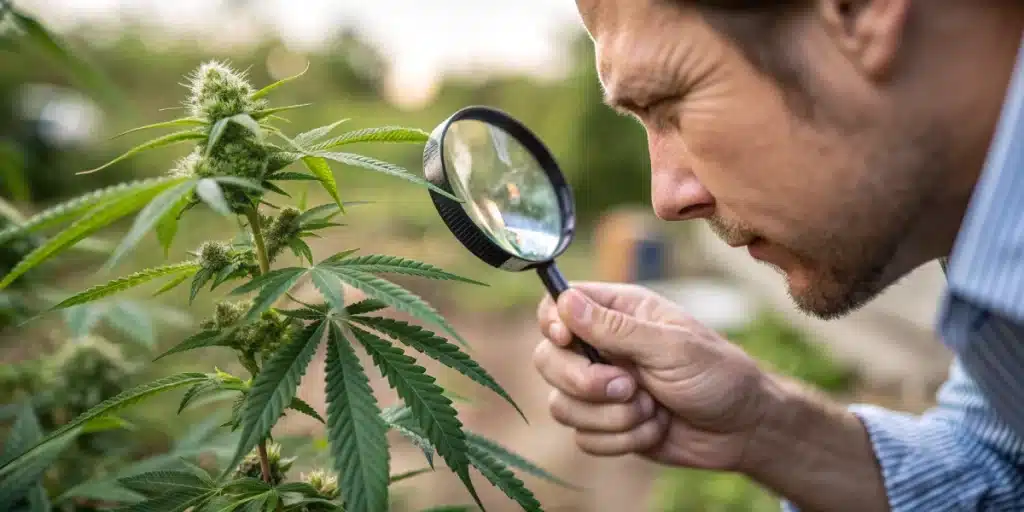
Nutrient Needs and Pest Pressure in the Vegetative Stage
During the vegetative stage, the rapid cell division and growth demand a nutrient-rich environment that supports strong structural development. Outdoor cannabis pest identification is crucial during this phase, as fast-growing plants can mask early signs of pest intrusion. A regular feeding schedule that incorporates slow-release fertilizers can provide consistent nutrient levels and reduce the risk of attracting pests.
By ensuring that plants receive balanced nutrition early on, cultivators reduce the susceptibility of their crops to pests that often target weakened specimens. The integration of nutrient management with outdoor cannabis pest control measures builds a resilient plant system capable of withstanding environmental challenges.
Feeding Adjustments for the Flowering Stage
As plants shift into flowering, their energy is redirected to producing dense, aromatic buds. This change in nutrient demand must be mirrored by a refined feeding schedule. Outdoor cannabis pest identification during this period focuses on identifying stress signals that may compromise bud quality. Adjustments in fertilizer composition can help maintain healthy growth while minimizing the risk of pest damage.
Maintaining a careful balance during the flowering phase is vital. An optimal nutrient mix not only promotes bud formation but also reinforces plant defenses. This dual approach facilitates effective outdoor cannabis pest control while ensuring that the plants thrive even under potential pest pressures.
How to Apply Fertilizers (Techniques) outdoor cannabis pest identification
Precise fertilizer application techniques are essential to maximize plant health and support outdoor cannabis pest identification efforts. Effective application methods deliver nutrients directly to the root zone without over-saturating the soil. Techniques such as drip irrigation or controlled foliar sprays can help minimize the conditions that favor pest proliferation.
When applying fertilizers, the consistency of application is key. By following a strict schedule and measuring nutrient doses accurately, growers can ensure that plants receive exactly what they need. This practice supports both healthy feeding and proactive pest management, as nutrient imbalances can often mimic or even invite pest infestations.
Smart Fertilizer Application Methods
Adopting smart application methods such as localized feeding near the root zone prevents the over-application of nutrients on the surface where pests are most active. Outdoor cannabis pest identification involves checking these areas frequently to ensure that no unwanted organisms have taken advantage of nutrient-rich residues.
Employing technology such as moisture sensors and nutrient monitors further enhances feeding precision. In turn, this allows cultivators to adjust outdoor cannabis pest control strategies based on real-time observations. When fertilizer application is executed properly, the risk of both nutrient burn and pest outbreaks is significantly reduced.
Linking Fertilizer Timing with Pest Detection
Fertilizer timing is critical not only for optimal plant growth but also for effective outdoor cannabis pest identification. Coordinating feeding times with regular garden inspections creates a rhythm that helps spot early signs of pest activity. As nutrients are delivered, it is important to follow up with visual inspections to ensure that the plants are responding positively.
This proactive approach minimizes surprises and allows for prompt outdoor cannabis pest control interventions when needed. By synchronizing nutrient application with pest checks, cultivators create a dynamic environment where both feeding and pest management work hand in hand to promote plant vitality.
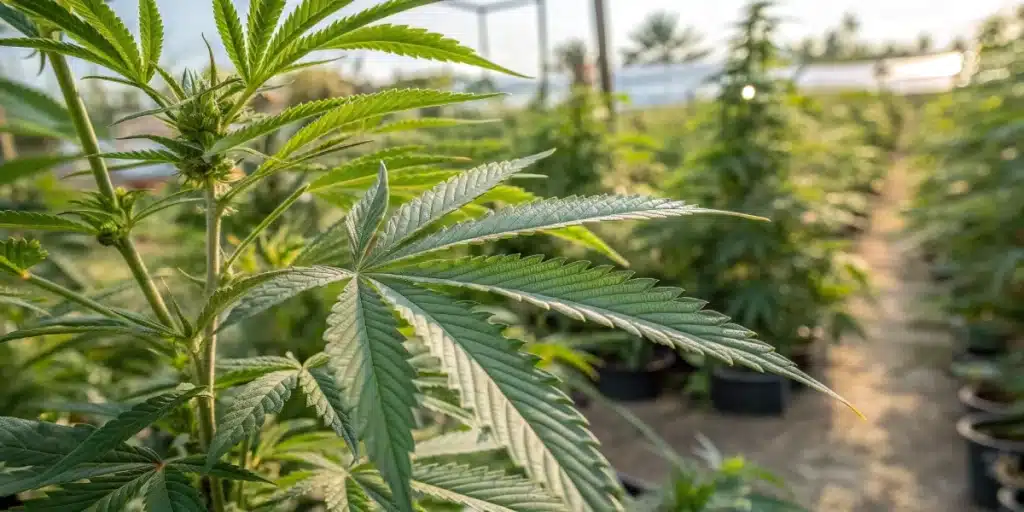
Avoiding Overfeeding and Burn outdoor cannabis pest identification
Overfeeding can lead to nutrient burn, which not only stresses the plant but also opens the door to pest invasions. Gardeners must be cautious when applying fertilizers, as excessive nutrients can damage delicate root structures and weaken overall plant defenses. Outdoor cannabis pest identification in these cases involves differentiating between true pest damage and symptoms of nutrient burn.
Understanding the delicate balance between adequate feeding and overfeeding is key. By monitoring nutrient levels and adjusting application rates, cultivators can avoid the pitfalls of overfeeding while still providing the necessary elements for growth. This balance directly supports outdoor cannabis pest control measures by keeping plants robust and less inviting to pests.
Maintaining Nutrient Balance to Prevent Burn
Maintaining a nutrient balance is a critical element in preventing overfeeding. Excess fertilizer not only harms the roots but may also leave behind residues that attract pests. Gardeners should use calibrated tools to measure nutrient solutions accurately. Outdoor cannabis pest identification is often easier when plants are not simultaneously suffering from nutrient toxicity.
Regular testing of soil nutrient levels can inform necessary adjustments, ensuring that the feeding process remains efficient and safe. With a balanced nutrient regime, plants are better equipped to fend off pest infestations, leading to a healthier and more productive garden.
Implementing Safeguards Against Nutrient Burn and Pest Infestation
Implementing safeguards such as scheduled feeding reviews and soil pH monitoring minimizes the risk of nutrient burn. When outdoor cannabis pest identification reveals signs of stress, a quick intervention can prevent long-term damage. Gardeners may employ organic supplements and microbial inoculants that not only improve soil quality but also boost natural pest resistance.
Maintaining clean application tools and avoiding over-saturation of the soil are practices that support both feeding precision and outdoor cannabis pest control. By adopting these measures, cultivators ensure that every feeding cycle reinforces plant strength and mitigates vulnerabilities to pest intrusions.
Integrated Pest Management Strategies outdoor cannabis pest identification
Incorporating integrated pest management (IPM) strategies offers a holistic approach to maintaining plant health. IPM combines physical, biological, and chemical methods to manage pest populations effectively. A proactive approach to outdoor cannabis pest identification is at the core of IPM, allowing cultivators to react swiftly to any signs of infestation.
By integrating these strategies with a robust feeding schedule, cultivators can address nutrient imbalances and pest challenges simultaneously. Monitoring tools, beneficial insects, and organic treatments come together in a balanced regimen that supports both plant nutrition and outdoor cannabis pest control.
Holistic Tactics for Outdoor Cannabis Pest Identification
Successful pest management begins with precise outdoor cannabis pest identification. Using a combination of regular visual inspections, sticky traps, and digital monitoring tools, cultivators can detect pest activities at an early stage. This comprehensive approach reduces the need for aggressive chemical interventions and preserves the natural balance of the garden ecosystem.
Complementary practices, such as crop rotation and companion planting, further reinforce a garden’s natural defenses. When applied consistently, these tactics offer an effective way to maintain a pest-resistant environment while supporting optimal nutrient uptake.
Effective Solutions for Outdoor Cannabis Pest Control
Once pests are identified, timely intervention is essential. Outdoor cannabis pest control techniques include the application of organic pesticides, the use of insecticidal soaps, and introducing natural predators into the ecosystem. These solutions work together to curtail pest populations without compromising plant health.
Combining preventive measures with targeted treatments helps maintain a balance between nutrient feeding and pest management. As part of an integrated strategy, these methods reduce the likelihood of recurring infestations, ensuring that each growing cycle is met with improved plant vigor and yield.
Faqs
What are the primary signs that pests are affecting my outdoor cannabis plants?
Pests can leave a variety of visual cues including irregular holes, discolored spots, and sticky residues on leaves. Early outdoor cannabis pest identification involves checking for these signs along with observing changes in overall plant vigor. Using monitoring tools and regular inspections can help pinpoint the specific pests causing the damage.
How can a balanced feeding schedule help with pest management?
A balanced feeding schedule ensures that plants receive the nutrients they need without becoming overfed, which can attract pests. When nutrient levels are optimized, plants are naturally stronger and more resistant. This synergy between proper feeding and timely outdoor cannabis pest control minimizes stress and helps prevent infestations.
Are organic pest control measures effective for outdoor cannabis cultivation?
Yes, organic methods such as beneficial insects, organic pesticides, and natural supplements can be highly effective when integrated into your overall strategy. Implementing outdoor cannabis pest identification techniques alongside these methods creates a resilient garden ecosystem that supports plant health and high yields.
Throughout each stage of cultivation, balancing the demands of feeding and pest management remains critical. Cultivators often find that integrating quality nutrient schedules with rigorous outdoor cannabis pest control practices leads to more vibrant and productive gardens. Regular assessments and adjustments are key to maintaining this equilibrium, allowing plants to flourish even under challenging conditions.
Many growers report success when they combine tried-and-true methods with innovative strategies. For instance, using organic nutrient blends can often discourage pest populations from taking hold, while mechanical removal techniques and biological controls help to maintain an optimal balance. Some enthusiasts even share that incorporating strains like Blue Dream Seeds can enhance the overall resilience of the garden, with additional benefits noted when experimenting with varieties such as Godfather OG Seeds and Girl Scout Cookies. This blend of traditional knowledge and modern techniques reinforces a comprehensive strategy for thriving outdoor cannabis cultivation.




